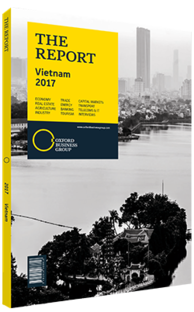Truong Quang Nghia, Minister of Transport: Interview

Interview: Truong Quang Nghia
What factors lay behind the privatisation of key state-owned enterprises (SOEs)?
TROUNG QUANG NGHIA: Restructuring SOEs with a focus on state economic groups and corporations has been identified by the party and the government as one of the three key missions in the process of restructuring and improving the competitiveness of our economy. The Ministry of Transport always pays attention when equitising an SOE and proposing the investment opportunities to both domestic and foreign investors. Investors must have the financial capacity and written commitment from competent persons that it will support and act in the long-term interest of the SOE with regards to transferring new technologies, training human resources, improving financial capacity and corporate governance, supplying raw materials, and developing the product consumption market in order to become strategic investors in the business.
In recent years some of the MoT’s businesses, such as Vietnam Airlines, have completed negotiations and signed with Japan’s All Nippon Airways. The Japanese carrier has officially become a strategic shareholder in Vietnam Airlines and will participate in its management and invest in its business development. This is one of the important factors contributing to the success of the equitisation process for SOEs. In the near future the MoT will continue to pay attention and create favourable conditions for the purchase of shares by strategic investors in equitised state enterprises.
How can the MoT secure additional public-private partnerships (PPPs) for transport projects?
NGHIA: Countries in general, especially the developing ones, are always faced with the challenge of meeting investment requirements and extending resource capabilities, as there is always a shortage of public investment for infrastructure development. For Vietnam, the investment required for transport infrastructure development from 2016 to 2020 is approximately VND950trn ($42.5bn), while public investment meets only around 26% of this. In this context, the government found it crucial to call for private sector investment in order to successfully implement infrastructure developments with a specific focus on transport infrastructure.
To further attract investment from the private sector we need to focus on overcoming some difficulties. For instance, institutional policies are considered key to accelerating and successfully implementing the mobilisation of private investment. The government has been very careful when making changes to legislation, such as its issuance of Decree No 15/2015/ ND-CP dated February 14, 2015 on investment in the form of PPPs and Decree No 30/2015/ND-CP dated March 17, 2015 on investor selection. These decrees are now in line with international practices so that projects to be carried out under the PPP model can be offered to the international market, thus attracting foreign capital and investors. However, aside from implementation, attracting foreign investors and capital is difficult and the government is continuing to study risk sharing and guarantee mechanisms for the projects to ensure their feasibility in line with the scale and creditworthiness indicators and characteristics of Vietnam’s economy.
Another decisive factor of a project’s viability is funding. Projects under the PPP model can be implemented only when there is a feasible financial plan and proven credit funds. Because projects require the participation of state capital to ensure their financial viability the MoT has petitioned the government and the Congress to prioritise its budget balance. Regarding loans, we continue to work with the State Bank of Vietnam, and related ministries and agencies, to develop a suitable risk-sharing mechanism in concordance with international practices and conditions specific to Vietnam to ensure the mobilisation of long-term credit funds, especially foreign loans.
You have reached the limit of premium articles you can view for free.
Choose from the options below to purchase print or digital editions of our Reports. You can also purchase a website subscription giving you unlimited access to all of our Reports online for 12 months.
If you have already purchased this Report or have a website subscription, please login to continue.

